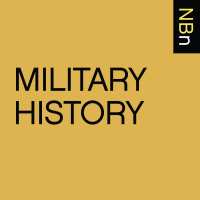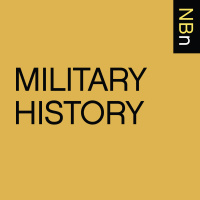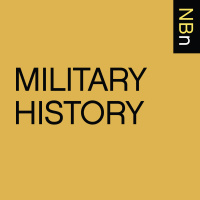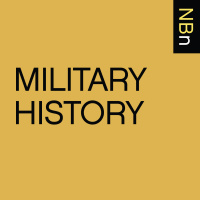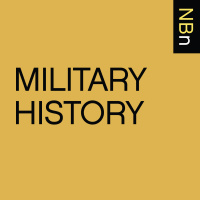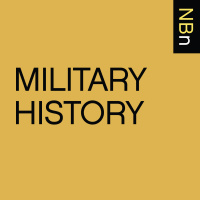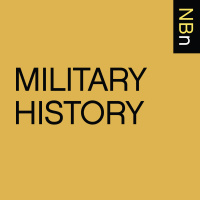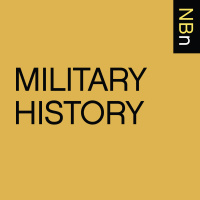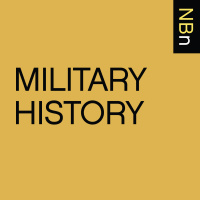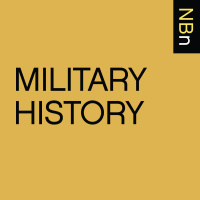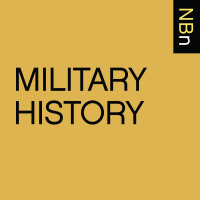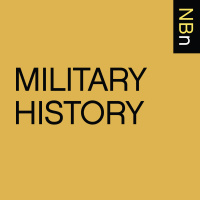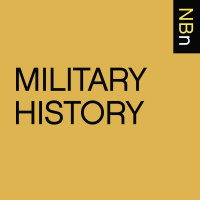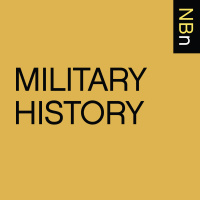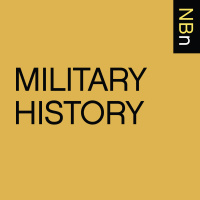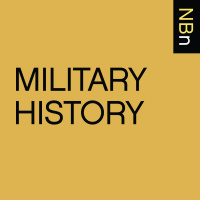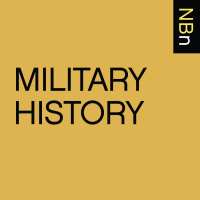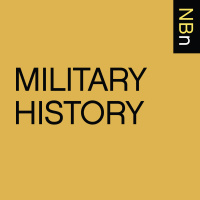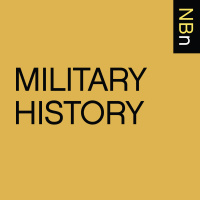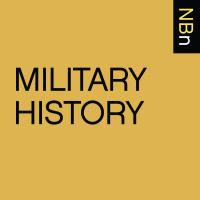Sinopsis
Interviews with Scholars of Military History about their New Books
Episodios
-
Richard Rubin, “Back Over There” (St. Martin’s Press, 2017)
06/08/2017 Duración: 01h29minThe majority of the books we profile on New Books in Military History are traditional research narratives, monographs written by historians and authors seeking to present a particular campaign, organization, battle, or individual in detail. Once in a while, though, we take pride in introducing our listeners to projects that are more focused on how memory and history are intertwined, bringing the past to the present. In this episode, we speak with New York Times travel writer and amateur historian Richard Rubin about his own thoughts on the First World War and how it shaped a special relationship between many Frenchmen and the ideal of America that survives to this day. His most recent book, Back Over There: One American Time-Traveler, 100 Years Since the Great War, 500 Miles of Battle-Scarred French Countryside, and Too Many Trenches, Shells, Legends, and Ghosts to Count (St. Martins Press, 2017), is a deeply personal account of Rubin’s many walks across the Western Front and his encounters with local c
-
Gerben Zaagsma, “Jewish Volunteers, the International Brigades and the Spanish Civil War” (Bloomsbury Academic, 2017)
24/07/2017 Duración: 33minIn Jewish Volunteers, the International Brigades and the Spanish Civil War (Bloomsbury Academic, 2017), Gerben Zaagsma, Senior researcher at the centre for contemporary and digital history at the University of Luxembourg, discusses the participation of volunteers of Jewish descent in the International Brigades during the Spanish Civil War, focusing particularly on the establishment of the Naftali Botwin Company, a Jewish military unit that was created in the Polish Dombrowski Brigade. Zaagsma analyses the symbolic meaning of the participation of Jewish volunteers and the Botwin Company both during and after the civil war. He puts this participation in the broader context of Jewish involvement and Jewish/non-Jewish relations in the Left, and asks to what extent Jewishness and Jewish concerns mattered in the International Brigades and why the Botwin Company was actually created. To this end, the book examines representations of Jewish volunteers in the Parisian Yiddish press (both communist and non-communist).
-
Peter Eisner, “MacArthur’s Spies: The Solider, the Singer, and the Spymaster Who Defied the Japanese in WWII” (Viking, 2017)
20/07/2017 Duración: 01h36sThe conquest of the Philippines in 1942 brought thousands of Americans under the control of the empire of Japan. While most of them were interned or imprisoned for the duration of the war, a remarkable few evaded capture and fought on against the Japanese. In MacArthur’s Spies: The Soldier, the Singer, and the Spymaster Who Defied the Japanese in World War II (Viking, 2017), Peter Eisner describes the efforts of three of them John Boone, Claire Phillips, and Chick Parsons to incite an insurgency against the Japanese occupation. Facing long odds, they risked their lives to undermine Japan’s control, with Claire’s Manila nightclub supplying resources and information to Boone in the nearby countryside and the intelligence passed on to Chick and other officers working towards America’s return to the Philippines. Their efforts in association with that of others provided American and Filipino guerrillas with much-needed material, and smuggled in food and supplies to thousands of prisoners of
-
Isabella Ginor and Gideon Remez, “The Soviet-Israeli War, 1967-1973: The USSR’s Intervention in the Egyptian-Israeli Conflict” (Oxford UP, 2017)
19/07/2017 Duración: 59minThe title of Isabella Ginor and Gideon Remez‘s The Soviet-Israeli War, 1967-1973: The USSR’s Intervention in the Egyptian-Israeli Conflict (Oxford University Press/Hurst, 2017), tells you that this is a revisionist history, which argues that the Six Day War (1967) and the Yom Kippur War (1973) were not merely brief explosions of Arab-Israeli violence but part of longer sustained conflict between Israel and the Soviet Union. The role of Soviet “advisors” in Egypt in the period is well known. Using memoirs and testimony of Soviet veterans, Ginor and Remez show that the Soviet involvement was much more direct and provocative than previously understood. In addition, the authors significantly change our understanding of the eventual rapprochement between Egypt and the United States. The usual story relies heavily on the memoirs of Henry Kissinger, who naturally takes much of the credit for the supposed “expulsion” of Soviet advisors and the decision by Sadat after the war to mov
-
Jennifer T. Roberts, “The Plague of War: Athens, Sparta, and the Struggle for Ancient Greece” (Oxford UP, 2017)
16/07/2017 Duración: 56minThe Peloponnesian War was one of the first subjects of historical inquiry, and one that has been the subject of many works ever since Thucydides wrote his famous account of the conflict. Yet these works typically focus just on the decades when Sparta’s Peloponnesian League fought against the Athenian empire. In The Plague of War: Athens, Sparta, and the Struggle for Ancient Greece (Oxford University Press, 2017), Jennifer T. Roberts sets the war within the broader context of inter-state hostilities in 5th and 4th century Greece. As she explains, fighting between the two sides did not begin in 431, nor did it really end in 404. Instead the Peloponnesian War was just one of a series of conflicts that stretched throughout the Hellenic era, in which victories often simply set the stage for the next round of battles. Though Sparta may have defeated Athens in 404, by continuing the story beyond then Roberts shows how the new alignments that resulted transformed the city states in ways that led to Sparta’
-
Patrick N. Hunt, “Hannibal” (Simon and Schuster, 2017)
13/07/2017 Duración: 01h41minIn 218 BCE, the Carthaginian general Hannibal Barca launched an invasion of Italy designed to bring the Roman Republic to its knees. Yet for all of his success in defeating Rome’s legions on the battlefield, Hannibal ultimately failed in his lifelong goal. In Hannibal (Simon and Schuster, 2017), Patrick N. Hunt recounts the triumphs and frustrations of the legendary commanders dramatic military career. The son of a Carthaginian leader who fought Rome in the First Punic War, Hannibal was raised to reverse Carthage’s loss in that initial conflict. This he did by taking the fight to Rome, where his outnumbered armies triumphed over the Romans in three successive battles. Yet, as Hunt explains, Rome soon learned from Hannibal’s example, and the Carthaginians’ inability to translate battlefield victories into a Roman surrender left him mired in a war of attrition he could not win. By the time he faced a Roman army at Zama in 202 BCE, the situation was now reversed, as Scipio Africanus used
-
Robert M. Browning Jr., “Lincoln’s Trident: The West Gulf Blockading Squadron during the Civil War” (U. of Alabama Press, 2015)
10/07/2017 Duración: 54minThough the U.S. Navy’s blockade of the Confederacy has not received the attention devoted to the bloody campaigns on land, it was an important contributor to the Union’s victory in the Civil War. In Lincoln’s Trident: The West Gulf Blockading Squadron during the Civil War (University of Alabama Press, 2015), Robert M. Browning Jr. describes the operations of the blockade in the Gulf Coast region. At the start of the war the newly-formed West Gulf squadron was faced with the task of patrolling hundreds of miles of coastline, from the Florida port of Pensacola to the Rio Grande River. Initially composed of just a handful of ships, the squadron would often spend months stationed off the coast, attempting to interdict the blockade runners that aided the Confederate war effort by bringing in the supplies the Confederates could not produce themselves. As the war went on the squadron took on the formidable task of capturing the major Confederate ports, and under the command of David Farragut it was
-
Should the U.S. Have Entered World War One?
24/06/2017 Duración: 01h05minIn the inaugural podcast of Arguing History, historians Michael S. Neiberg and Brian Neumann address the question of Americas decision in 1917 to declare war against Germany. Together they discuss the factors involved in it, such as Germanys wartime provocations and the economic impact the war was having upon the nation. Yet it was more than just a product of the events of the conflict, as it came at a time when the role of the United States in the world was being redefined by its emergence as a major economic and financial power on the international scene. How Americans perceived this also played a role both in the decision to go to war, even though there was no consensus as to how the nation should respond to the consequences of their choice once they made it. Michael S. Neiberg is the Stimson Chair of the Department of National Security and Strategy at the U.S. Army War College and the author of Dance of the Furies: Europe and the Outbreak of World War I (Harvard University Press, 2014). Brian Neumann is a
-
Gary Kulik, “War Stories: False Atrocity Tales, Swift Boaters, and Winter Soldiers” (Potomac Books, 2009)
15/06/2017 Duración: 01h10minOne often hears stories of World War II and Korean War veterans who came back from the war and refused to talk about what they had experienced in combat. They neither wanted folks at home to know what had happened nor did they want to relive it themselves. It was just too horrible to relate. The truth about combat in those conflicts, so we are told, was therefore suppressed. In Vietnam, the truth was also suppressed, but in a different way and for altogether different reasons. As Gary Kulik demonstrates in his remarkable book ‘War Stories’: False Atrocity Tales, Swift Boaters, and Winter Soldiers–What Really Happened in Vietnam (Potomac Books, 2009), some Vietnam veterans came back from the war and, far from hesitating to tell their “war stories,” exaggerated and even invented them. This was particularly true of atrocity tales, which were both numerous and well broadcast. As Kulik explains, the point of these false atrocity stories was not to portray the “grunts” in a
-
Andrew Boyd, “The Royal Navy in Eastern Waters: The Linchpin of Victory, 1935-1942” (Seaforth Publishing, 2017)
14/06/2017 Duración: 01h27minIn the 1930s the Royal Navy faced the problem of defending its empire in eastern Asia and Australia against the formidable naval power of Japan. How they responded to this threat in the final years of peace and the first years of the Second World War, is the subject of Andrew Boyd‘s book The Royal Navy in Eastern Waters: The Linchpin of Victory, 1935-1942 (Seaforth Publishing, 2017; distributed in the US by Naval Institute Press). As Boyd explains, the challenge was one of defending British interests against a modern fleet that was qualitatively the equal of theirs. Efforts to implement a strategy, though, were disrupted by the growing threat of war in Europe, and the fall of France in the summer of 1940 forced the British to reassess their strategic assumptions. The growing priority the British gave to their interests in the Mediterranean and the Middle East during this time came at the expense of their preparations against Japan, leading the British to seek greater cooperation with the United States a
-
John P. Langellier, “Fighting for Uncle Sam: Buffalo Soldiers in the Frontier Army” (Schiffer, 2016)
08/06/2017 Duración: 58minFrom the American Revolution to the present day, African Americans have stepped forward in their nation’s defense. Fighting for Uncle Sam: Buffalo Solders in the Frontier Army (Schiffer, 2016) breathes new vitality into a stirring subject, emphasizing the role men who have come to be known as “buffalo soldiers” played in opening the Trans-Mississippi West. This concise overview reveals a cast of characters as big as the land they served. Over 150 images painstakingly gathered nearly a half century from public and private collections enhance the written word as windows to the past. Now 150 years after Congress authorized blacks to serve in the Regular Army, the reader literally can peer into the eyes of formerly enslaved men who bravely bought their freedom on the bloody battlefields of the Civil War, then trekked westward, carried the “Stars and Stripes” to the Caribbean, and pursued Pancho Villa into Mexico with John “Black Jack” Pershing. Growing up in Tucson, Arizo
-
Patrick J. Hayes, “The Civil War Diary of Rev. James Sheeran, Confederate Chaplain and Redemptorist” (Catholic Univ. of America Press, 2016)
23/05/2017 Duración: 58minDuring the Civil War Father James Sheeran served as a Catholic chaplain for the 14th Louisiana Infantry. Between his various responsibilities Sheeran kept a journal in which he recounted his experiences with, and observations of, life in the Army of Northern Virginia. As editor of The Civil War Diary of Rev. James Sheeran, Chaplain, Confederate, Redemptorist (Catholic University of America Press, 2016), Patrick J. Hayes has provided readers with the most complete edition yet of Sheeran’s manuscript, one that details the activities of a man of faith in a time of war. An immigrant from Ireland, Sheeran joined the Redemptorist congregation in the 1850s and was serving as a parish priest in New Orleans when the war began in 1861. As a military chaplain, Sheeran witnessed firsthand many of the key battles of the Civil War, from Second Manassas in 1862 to Cedar Creek in 1864, and his recorded observations provide a valuable record of those clashes. Yet Sheeran’s diaries also serve as a window into what
-
Michael Bryant,” A World History of War Crimes: From Antiquity to the Present,” (Bloomsbury, 2016)
18/05/2017 Duración: 01h14minMichael Bryant’s book is both less and more ambitious than its title. He’s writing less of a history of war crimes than he is a history of the idea and concept of war crimes. He’s most interested in what people have considered a breach of the norms of warfare and how this concept has changed over time. The triumph of A World History of War Crimes: From Antiquity to the Present (Bloomsbury, 2016) is it’s reminder that, while expectations about how soldiers (and others) would act during warfare are not new at all, the notion of war crimes is actually quite recent. Bryant argues that ideas about the proper conduct of war go back to the ancient Near East. But these ideas were rarely based on the dignity of human person. Instead they derived from religion or from the shape of the political institutions in society. It was only in the 18th and 19th century, in the aftermath of the Enlightenment, that norms about conduct during warfare began to be based on the idea that mistreating civilians o
-
Steve Dunn, “Securing the Narrow Sea: The Dover Patrol, 1914-1918” (Seaforth/US Naval Institute, 2017)
15/05/2017 Duración: 46minMost accounts about the naval battles of the First World War focus upon the stalemate between the British Grand Fleet and the German High Seas Fleet, or the German raiders who attempted to disrupt Allied commerce. In Securing the Narrow Sea: The Dover Patrol 1914-1918 (Seaforth Publishing, 2017; distributed in the US by Naval Institute Press), Steve Dunn focuses on the often overlooked service of the British naval forces stationed in the English Channel during the conflict. The eclectic collection of destroyers, converted yachts, and requisitioned trawlers that comprised the patrol made for a considerable contrast with the dreadnoughts at Scapa Flow, yet, as Dunn demonstrates, they played a vital role in securing the Channel for the safe transport of British troops to France and in opposing the transit of German U-boats to their stations. In describing the admirals who commanded the station over the course of the war, the lives of the men who served aboard the ships, and the various engagements which they fou
-
Lynn Dumenil, “The Second Line of Defense: American Women and World War I” (UNC Press, 2017)
18/04/2017 Duración: 48minWhen America went to war against Germany in 1917, the scale of the conflict required the mobilization of women as well as men in order to achieve victory. In The Second Line of Defense: American Women and World War I (University of North Carolina Press, 2017), Lynn Dumenil describes the many ways in which women participated in the war effort and the ways in which it transformed their lives. As she notes, in the years leading up to the war increasing numbers of American women were employed outside the home and involved in the public sphere. For many the politically-engaged among their number, the decision to go to war presented an opportunity to demonstrate their gender’s patriotism and worthiness for the vote. Thousands showed their support for the soldiers by participating in a variety of volunteer activities, with some even traveling to Europe to work in canteens or as nurses. Many more took up the jobs that the men left behind, filling the void created by their enlistment. These efforts were celebrat
-
Phil Gurski, “Western Foreign Fighters: The Threat to Homeland and International Security” (Rowman and Littlefield, 2016)
17/04/2017 Duración: 53minPhil Gurski‘s Western Foreign Fighters: The Threat to Homeland and International Security (Rowman and Littlefield, 2016) is his second recent monograph on terrorism, and another useful resource for practitioners and non-specialists alike. Written in an approachable, grounded style, Western Foreign Fighters is both topical and novel; its comparative analysis of volunteers’ participation in non-sanctioned conflicts both jihadist and secular is especially notable. Gurski’s measured, thoughtful analysis is a credit to the Canadian intelligence community (wherein he spent his entire career) and I look forward to his further publications.Learn more about your ad choices. Visit megaphone.fm/adchoices
-
Seth Barrett Tillman, “Ex Parte Merryman: Myth, History, and Scholarship,” Military Law Review 481 (2016)
04/04/2017 Duración: 01h17minSeth Barrett Tillman has written “Ex Parte Merryman: Myth, History and Scholarship,” an article about the famous case that is popularly thought to demonstrate a conflict between the President and the federal courts during the American Civil War. Tillman’s article is an effort to revise the standard historical understanding of the case called Ex Parte Merryman. In the spring of 1861, just as the hostilities had begun in the Civil War, famously issued an order to the U.S. Army granting army officials discretion to suspend the writ of habeas corpus if resistance or treasonous activity were encountered in Union territory. That spring, as soldiers poured into the Washington, D.C. area through Maryland, the Army was confronted with popular protests and violence by civilians. One suspect was John Merryman, a young man from a prominent Maryland family. Merryman hired lawyers to seek his release via the traditional method of asking the federal courts for an order to release Merryman pending his trial
-
Norman Ohler, “Blitzed: Drugs in the Third Reich” (Houghton Mifflin Harcourt, 2017)
08/03/2017 Duración: 52minNorman Ohler’s Blitzed: Drugs in the Third Reich (Houghton Mifflin Harcourt, 2017) explores the drug culture of Nazi Germany. Far from being a nation of physical and mental purity portrayed by Goebbels’s propaganda machine, Ohler shows Germany was a hub of drug production and abuse during the 1920s. Manufacturers like Merck and Bayer openly marketed their wares to the public, building the basis of so-called big pharma on intoxicants. Produced by Temmler, the Nazi elite embraced methamphetamine as a wonder drug, free of the connotations of disease and degeneracy associated with the drug culture of the Weimar years. Stimulants became a valuable tool in Germany’s wartime arsenal. The German military acknowledged the value of amphetamines and distributed Pervitin en masse. Ohler argues amphetamines powered the Wehrmacht’s armored Blitzkrieg of 1939-1941, defeating the Allies in France and elsewhere. These gains were short-lived, however. Nazi Germany’s Faustian bargain with drugs eva
-
Edward Westermann, “Hitler’s Ostkrieg and the Indian Wars: Comparing Genocide and Conquest” (U. Oklahoma Press, 2016)
02/03/2017 Duración: 59minThe intersection of colonialism and mass atrocities is one of the most exciting insights of the past years of genocide studies. But most people don’t really think of the Soviet Union and the American west as colonial spaces. But while there are limitations to this, both fit well into a kind of geography of colonialism. This is why Edward Westermann‘s new book Hitler’s Ostkrieg and the Indian Wars: Comparing Genocide and Conquest (University of Oklahoma Press, 2016)is so interesting. Westermann teaches at Texas A & M University at San Antonio. Prior to this work, he wrote a well-regarded volume on the German police battalions on the Eastern Front in the Second World War. Before joining the university world, he was an officer in the US military, and he brings his training and experience to a study of the strategy and tactics of the armies which fought in each space. In doing so, he sheds new light on how each army behaved. He’s particularly good at understanding how tactics and milit
-
Michael S. Neiberg, “The Path to War: How the First World War Created Modern America” (Oxford UP, 2016)
28/02/2017 Duración: 43minIn The Path to War: How the First World War Created Modern America (Oxford University Press, 2016), acclaimed historian Michael Neiberg examines the background of war fever in the United States between 1914 to 1917 to present a new interpretation on the nation’s slide to entering the First World War in April 1917. In a departure from the general outlook on the war, he presents a case where the American public was more engaged in the process than has been allowed by historians who have traditionally focused on the Wilson administration’s leadership in the varying crises in German-American relations following the resumption of unrestricted submarine warfare in the winter of 1917. Rather than being passive observers who had to be convinced to join the war, Neiberg argues that many citizens, including ethnic German and Irish-Americans, were convinced by the course of actions over the three year period of neutrality that war was inevitable and the sooner the United States joined, the more quickly it c

